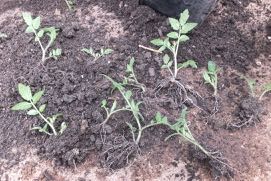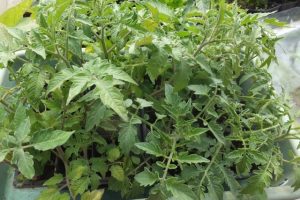
This month is when a productive greenhouse starts getting busy. We’re sowing trays of onions and leeks and starting off onion sets, potato sets likewise (in much bigger pots!). In the warmth of a propagator extra early batches of tender crops can have been sown already though often surpassed by batches sown now of: cucumbers, tomatoes, sweet & hot peppers, aubergines. Likewise sow first batches of melons, watermelons, okra, and tender bedding plants such as Lobelia, Petunias and so on. All these need warmth as in a propagator to germinate and grow.

We can save space initially by sowing several seeds in one small pot later pricking-out those seedlings into individual pots. As these grow we pot on into successively larger pots, and the less warm conditions, optimising space as we go. This works brilliantly, as long as pricking out is done very soon after the seedlings emerge otherwise they compete with each other badly. Likewise potting on needs equally prompt action or risks stunting their vigour.

Now, while our plants are all small their number is not a problem but as each seedling grows and needs more space most propagators soon get full and your plants suffer from crowding. Trouble is it’s expensive to heat a whole greenhouse continually much warmer than frost free. The solution’s a second, much larger propagator, or as I’ve call it a pot-on-agator. Within a (ideally also heated) cold-frame or just an area partitioned off with plastic sheets where your new plants can still be given a little extra warmth until large enough to move on further.

Luckily with tomatoes, by far our commonest crop, there’s a simple way of saving on that limited warm space. If you are going to want, say a dozen, tomato plants of your favourite variety, for indoors or out, then do not sow and prick out (or buy!) a dozen plus plants filling all that valuable warm space early on. Grow just two plants of a variety. Treat these well and as they get larger they’ll start to produce numerous side shoots. Usually these are removed, and discarded, to promote cropping, but side-shoots are remarkably easily and rapidly rooted to make as many plants as you’ll ever want. And they’ll do so promptly when required, and be bushy and already flowering! Neat trick!


